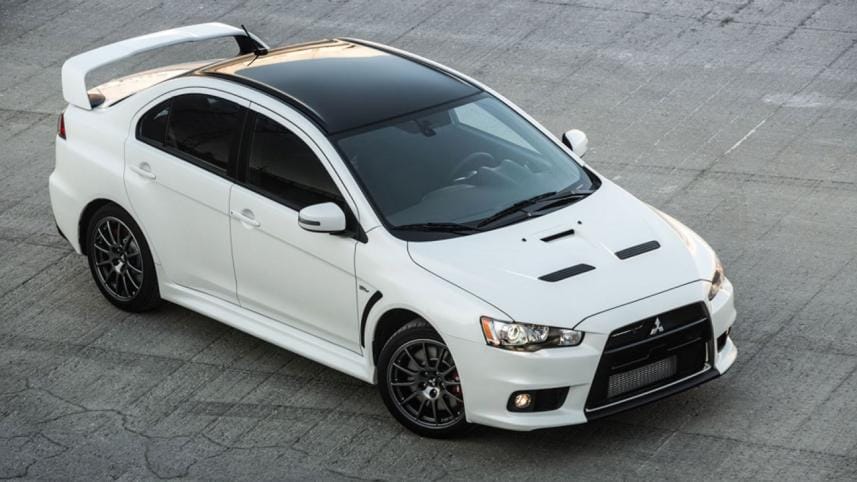The maddest, baddest of the evolved

The Lancer Evolution has graced us with two decades of crazy all-wheel-drive, turbocharged fun. Over the years, it has enjoyed an immense level of support from aftermarket tuners, and has participiated in countless grassroots and professional motorsport events. We do a roundup of the best of the tuned Evos from the past, as a way of saying goodbye.
Sierra Sierra Time Attack Lancer Evo IX – Built for the World Time Attack Championship by Sierra Sierra, this insane Evolution IX was the first to beat the 1:43.523 lap time of Buttonwillow Racetrack (Set by the HKS developed CT230R Evo in 2007), way back in 2010 by setting a time of 1:43.20. Since then, the evil looking Evolution has been the talk of the Time Attack enthusiasts because of its "World Champion" status.
Cyber Time attack Evo IX – While the Sierra Sierra and HKS CT230R dominated the US time attack championships, in Japan, the Cyber Evo and its eccentric driver Tarzan Yamada was definitely the winning formula. In 2011, the Cyber Evo set a blazing time around Tsukaba, the time attack holy ground in Japan. They haven't looked back since.

APC drag Evo II – While there have been more recent successes by Lancer Evolutions in Pro-drag racing, with faster trap speeds and quarter mile times, the pioneer has to be what many called the "Australian Assassin". APC's bonkers 1994 Evo III has close to a thousand horsepower underneath that flame ridden fiberglass composite shell, and its fastest quarter stands at 7.943 @ 176.47 MPH. If there's anyone outside the Japanese circle of influence who can build a proper Evo, its surely the Aussies.

Nemo Racing Time Attack Lancer Evo VII – The Nemo Racing time attack Evo is so far removed from its street car base that it can barely be called an Evolution anymore. It still retains the legendary 4G63 under its composite body though, so its still very much an Evo. The main highlight of this insane Evolution is the full-race spec aero, which, with the WTAC's lax rules regarding unique aero, is balls to the wall mad.

Kyoichi Sudo's Evo III from Initial D – Takumi's Toyota AE86 Truneo might be the star of the anime Initial D, but the Evo III driven by Kyoichi Sudo of team Emperor was the highlight for many in the first season. Sudo and his insane Evo III, equipped with a monstrous anti-lag turbo setup, was the first opponent to well and truly trump Takumi Fujiwara and his underpowered Trueno in a downhill race. For its fearsome stature and poise in corners, the Evo III deserves a spot on this list.

HKS CT230R Time Attack Lancer Evo VIII – For a time attack lap record to stand for three whole years is no mean feat. If anyone could do it, the Japanese maestros of the tuning world would be able to do something like that. The full carbon, 100-percent evil CT230R is legendary, and some claimed it was unbeatable. Such was the power and stability of the car, which has essentially been running since 2003 (back then it was known as the TRB-02, and had unpainted dry carbon covering every square inch of it).

The final evolution of the Evo
Mitsubishi recently revealed details on the last of the Evos, and the compact sport sedan is a going out on a high note. Mitsubishi is releasing 1,600 examples of the 2015 Lancer Evolution Final Edition model, which gets a little more power, a unique look, and a few more performance features.
More on the Final Edition and the facelifted Lancer here.
Based on the GSR model, the Evo Final Edition increases the output to 303 HP and 305 lb-ft of torque, up from 291 and 300, respectively. This is put to the roads through a five-speed manual transmission and the Evo's Super All-Wheel Control all-wheel-drive system. Other performance equipment consists of light-weight Brembo front rotors and Bilstein shocks and Eibach springs at all four corners.
Exterior changes include a black-painted aluminum roof, gloss black on the center bumper and hood air outlet, dark chrome on the grille surround and Enkei alloy wheels, and a Final Edition badge. Bi-xenon headlights with leveling control are also standard. Color choices are Octane Blue, Rally Red, Mercury Gray, and new Pearl White. We at SHIFT would love to see a couple of these in the Bangladeshi roads although we doubt that would happen.
While the interior is pretty much the same as previous versions, the Final Edition gets red stitching on the seats, steering wheel, shift knob, center console, floormats, and e-brake handle. The headliner, pillars, sun visors, and assist handles are black. The center console box is gloss black and has a serial number plaque labeled with a number between US/JP0001 and US/JP1600. There is also a Final Edition animation on the meter display.
The Final Edition Evo is on sale now for $37,995. Note, while the Evo may be dead, the humble Lancer on which it's based lives on for now. Mitsubishi last week unveiled an updated version for 2016, and we must say that its not particularly good looking. At all.





 For all latest news, follow The Daily Star's Google News channel.
For all latest news, follow The Daily Star's Google News channel.
Comments